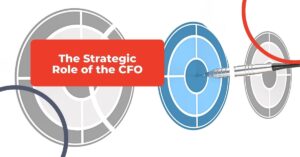Financial Realities & Risks in Healthcare: Innovation in Leadership
Jun 15, 2022
The healthcare industry has experienced business and financial dynamics in the last few years that have challenged not just the industry but all of us as patients, customers, or receivers of care. In many ways, the healthcare industry parallels what many industries are facing. But a layer of complexities like insurance, technology, information, and specialized leadership make the future of healthcare uniquely challenging and exciting. Read on to explore what more of these dynamics are and how healthcare leaders can strategically respond.
The healthcare industry is complex, going far beyond doctors, nurses, prescriptions and patients. It faces unique challenges and dynamics that are not found in other industries, including:
- The industry is heavily regulated and governed by several laws and regulations that vary from country to country.
- Healthcare providers must maintain a high level of security for all patient information, which can result in expensive data management systems and processes.
- The industry has a large number of stakeholders, which include governments, insurance companies, pharmaceutical companies, medical device manufacturers, medical professionals, and patients themselves.
- Healthcare providers are required to provide care for patients while maintaining profitability while balancing the needs of employees and those who work in their supply chain.
For all that makes the healthcare industry unique, it still faces familiar obstacles and opportunities. In many ways, the impact of those challenges is more acutely experienced.
Staffing
When healthcare faces staffing shortages, the repercussions are significant. Hospitals can’t close their doors or limit their hours. Increased labor rates can’t be easily or quickly addressed when revenue models are as complex as they are or as reliant on other stakeholders.
Meanwhile, the labor market is trending towards imperatives that aren’t necessarily driven by salary or finances. Employees want more time with family, more flexibility, and workplaces more aligned to their personal values. These wants aren’t always inherent to the ways healthcare organizations operate.
Revenue
With inflationary costs increasing, the costs of all kinds of services are increasing. This puts pressure on insurance carrier relationships, managed care firms and more. The large cash infusion many healthcare providers experienced during the height of the pandemic is drying up, adding still more pressure.
Inefficiency
The number and complexity of gears in the healthcare engines have created chronic inefficiency. A simple example illustrates this: when a patient goes into any appointment for new care the first thing they’re handed is a clipboard to sort through multiple papers to check boxes and write descriptions. Instead of digital workflows, the industry at large is still reliant on insecure, time-consuming and space-consuming methods of data management.
How Healthcare Leaders Can Respond
A key to all of these issues is innovation.
Where staffing is concerned, it’s up to leadership to explore new ways of doing things. Telehealth became widely and successfully used in the pandemic, allowing for more flexible, comfortable appointments for both patients and providers. Apps from healthcare providers, perhaps once convenient, became essential and easy ways to distribute results or to communicate with patients. These examples show where possibilities exist to address priorities for the labor market and create more cost efficiencies.
Regarding revenues, healthcare organizations will need to increase value-based purchasing to reduce care costs overall. Negotiating existing contracts will be necessary, but so will creating new revenue sources. This could include fitness and wellness partnerships, relationships with in-demand fitness companies, smartwatch or device companies and more.
Innovation is the only cure for inefficiency. Custom software and EHR platforms like Epic have created sophisticated ways to manage patient data and information, but more can be done from an organizational, “local” level. Digital intake forms, technical training so providers and patients can better utilize health data on devices together, real-time appointment updates delivered via text or app, automating more administrative tasks, and improving supply chain management are just a few ways technological innovation can, relatively quickly, improve cost management and create revenue potential.
Create The Best Team
For responses to modern challenges to work, a diverse and multi-disciplined leadership team is critical. Technologists or data consultants need to sit side by side with operations officers or medical experts. Problems should be explored from multiple perspectives to find novel answers.
Your CFO should be an essential part of that team and should be tasked with much of the information collecting and connecting to accurately present financial innovations to the team. This could include financing relationships, new or better reporting mechanisms, new key performance indicators designed around expanding revenue models, strategic thinking around financial models of care, supply chains, insurance companies and more.


